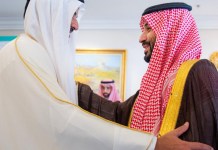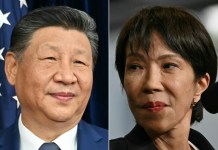Russia and China conducted their second Joint Strategic Patrol in the Asia Pacific Region by deploying two Russian Tu-95MS and four Chinese H-6K strategic bombers over the Sea of Japan and the East China Sea. Reports claim China has used a more powerful variant of the H-6K aircraft in the drill.
Afghanistan, The Graveyards Of Super Powers – Will China Be Next In The Firing-Line?
The Russian Tupolev Tu-95 is a large, four-engine turboprop-powered strategic bomber and a missile platform operated by the Russian Aerospace Forces. On the other hand, the Chinese Xian H-6K is a license-built version of the Tupolev Tu-16 twin-engine jet bomber, built for the PLAAF.
China’s state-owned Global Times said this is a new variant of the H-6K bomber, which is apparently more powerful than the original version. It said Japan’s Air Self-Defense Force was able to take photos of the Chinese and Russian bombers on Tuesday, and in one photo, an H-6 bomber could be seen having four pylons under its right-wing. This means it likely has a total of eight wing pylons.
Chinese military observers noticed that the previously known H-6K bomber only has six wing pylons, three on each wing, but the H-6K photographed by the Japanese troops has eight pylons, the GT report said.
The Chinese experts speculate that the two pylons near the tips of the wings could be used to carry pods for electronic countermeasures, “which will make significant contributions to the bomber’s survivability in modern warfare”.

The official Twitter handle of state-owned Global Times, posted, “#China and #Russia on Tue held the second joint strategic patrol in the Asia-Pacific region, with China sending four H-6K bombers, & Russia sending two Tu-95 bombers to the Sea of Japan and the East China Sea. No foreign airspace was entered.” [sic]
#China and #Russia on Tue held the second joint strategic patrol in the Asia-Pacific region, with China sending four H-6K bombers, & Russia sending two Tu-95 bombers to the Sea of Japan and East China Sea. No foreign airspace was entered. pic.twitter.com/lXpeuHuSlA
— Global Times (@globaltimesnews) December 22, 2020
According to the Russian Defence Ministry, “the measure was conducted as part of implementing the provisions of the 2020 military cooperation plan and is not aimed against third countries”. Both sets of aircraft flew in strict compliance with the provision of international law.
“There were no violations of the airspace of foreign states,” the Russian Defence Ministry affirmed.
It also said the air patrol was carried out by the two nations so as to deepen and develop the Russian-Chinese relations, while also raising the level of interaction between the militaries of the two.
The patrols were also a step towards improving the capabilities of both the armed forces for conducting joint measures, and strengthening the global strategic stability, as per the ministry.
Follow EurAsian Times on Google News




